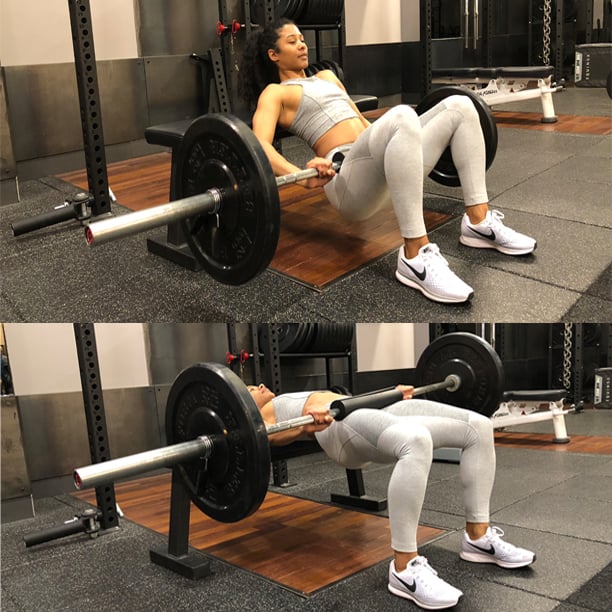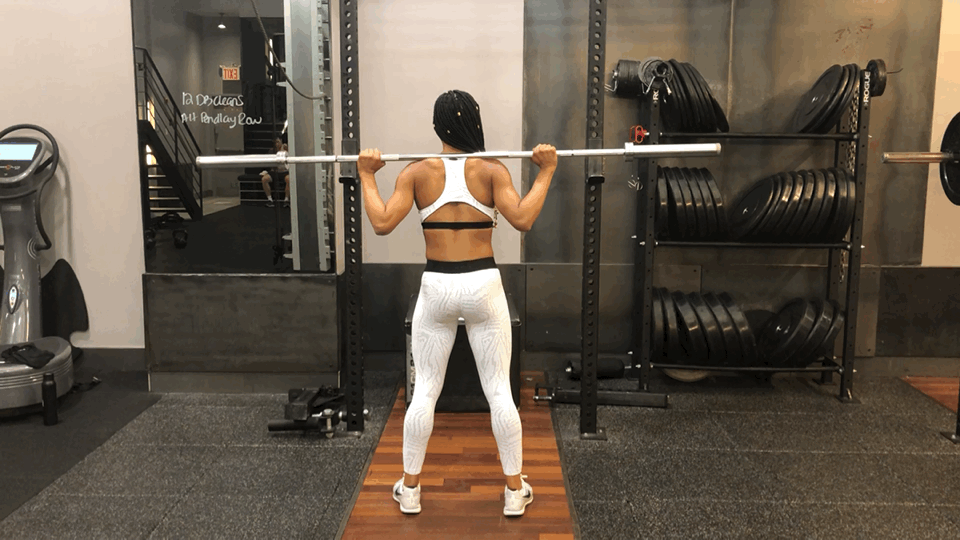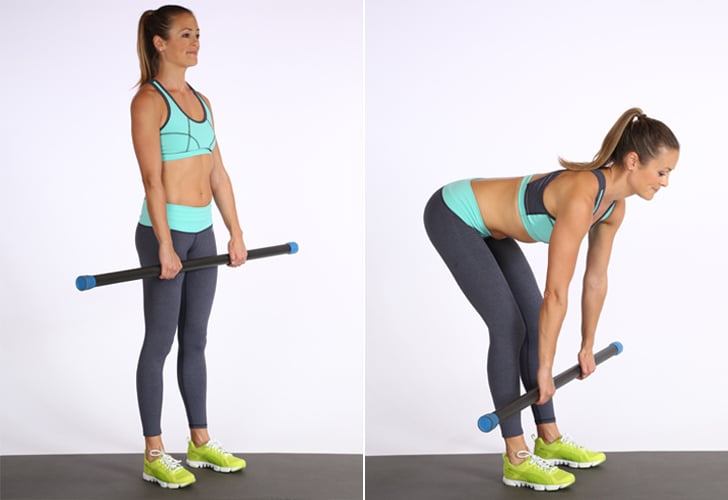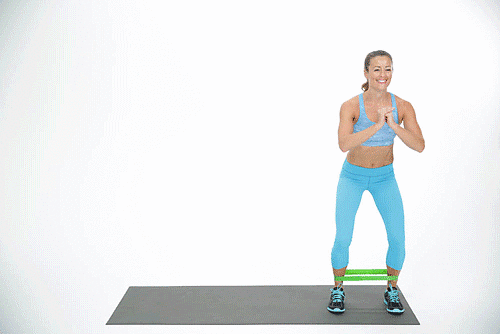There isn't one perfect way to sculpt and grow your glute muscles, but the method by Bret Contreras, PhD, CSCS, and author of Glute Lab: The Art and Science of Strength and Physique Training [1], is pretty close. It's so good, he's been dubbed "The Glute Guy" and has the receipts to prove it on his Instagram [2].
If you've been doing random lower-body exercises at the gym without any real purpose, you've got to try Bret's lower-body workout format to grow your glutes, develop your lower-body strength, and become more functional.
Before getting started it's important to manage your expectations. "So much of getting a nice butt is due to genetics," Bret told POPSUGAR. "If you've got amazing genetics, you can barely do anything and have a nice butt," he added. Conversely, "You might never end up with the perfect butt of your liking, but it will get bigger and stronger," he said.
If you're a beginner, you can and should start with bodyweight movements, eventually building up to using dumbbells and barbells. You can also incorporate upper-body push and pull exercises, like a dumbbell bench press [4], the inverted row [5], pull-ups [6], and the overhead shoulder press [7] to your routine to make it a total-body workout. If you don't add upper-body movements into this workout, Bret said you can do it three times a week, taking a day of rest in between each time you perform it. On the other days, you can do cardio or an upper-body workout. If you do add upper-body exercises to the following workout, perform this workout three times a week.
If your goal is to improve your lower-body strength and get a bigger butt, check out Bret's workout ahead.
The 4-Move Lower-Body and Butt-Strengthening Workout
Before getting started, be sure to warm your muscles up [8]. Make sure you have access to a barbell, bumper platers, and dumbbells. When choosing a weight, Bret recommended going as heavy as possible while maintaining good form. Here's more on how to choose the right weight [9].
If the weight is too light, increase it in order to challenge your muscles. If it's too heavy and you can't perform the designated sets and reps, lighten the weight. Most importantly, don't forget to lift with effort to stimulate muscle growth [10], Bret said. Be sure to take two to three minutes of rest in between each exercise to allow your body to fully recover since you're lifting heavy weights and fatiguing your muscles.
- Barbell hip thrust: three sets of eight to 12 reps
- Barbell squat: three sets of eight to 12 reps
- Romanian deadlift: three sets of eight to 12 reps
- Lateral band walk: three sets of 20 to 30 reps
Barbell Hip Thrust
First, Bret recommended doing a bridge or thrust movement such as the barbell hip thrust. If this move is too advanced, try a glute bridge [12], a weighted glute bridge [13], or a single-leg bridge [14], for example. "I think it [the barbell hip thrust] works the glutes best because it has the highest glute activation of all the exercises," he said.
This is because when your knees are bent, your hamstrings are shortened, which means your glutes end up doing more of the work, Bret explained. He also likes this movement because there is constant tension on the hips.
The goal for this exercise is to eventually be able to thrust double your bodyweight for three sets of 10 reps, Bret said.
- Sitting on the floor with your legs extended, rest your back against a stable bench.
- Place a towel or shoulder cushion on the bar for comfort (optional). Roll the barbell over your thighs until the bar is directly above your hip joints.
- Brace your core. As you drive your heels into the ground, squeeze your glutes, lifting your hips up to full extension, meaning your hips are even with your knees.
- With control, lower back down to the ground.
- This is one repetition.
- Complete three sets of eight to 12 reps.
Barbell Squat
The second movement you should have is a squatting movement. You can do a barbell squat, a goblet squat [15], pistol squat [16], Bulgarian split squat [17] — any squat variation is acceptable. Bret likes squats because at the bottom of the movement, when your knees are bent, your glutes are doing more of the work and getting the greatest stretch.
Another reason he likes the squat is because it's a functional movement that works your legs, not just the glutes. Although the muscle activation is higher for the quads than the glutes in a squat, the stretch under load (the weight you're lifting) is what's the most important in this movement. "Theoretically, you might be able to build the glutes more when you do both of them instead of one," he said. Another thing to note is that, "Deeper squats grow the glutes more than shallower squats," so get low!
- Start with a loaded barbell; 75 pounds is a great starting point. Beginners should start with just the barbell and gradually add weight as they become familiar with the movement.
- Position your hands about shoulder-width apart on the barbell, and lightly grip the bar with an overhand grip.
- Step in front of the rack, and rest the bar on your trapezius muscles (the muscle closest to your neck/upper back).
- With your feet about hip-distance apart, lift the barbell off the rack. Take one to two steps backwards.
- Shift your weight back into your heels. Brace your abs as you begin to lower into a squat, keeping your head and spine in a neutral position. Your knees should be as close to 90 degrees as possible. Hold for one second.
- With your core still braced, drive through your heels to stand back up. Be sure to squeeze your glutes at the top of your squat. That's one rep.
- Complete three sets of eight to 12 reps.
Romanian Deadlift
The third movement you should have in your program is a hip-hinge movement (where you lead with the hips, like when you sit down in a chair). For example, you could do good mornings [18], reverse hypers [19], 45-degree hypers [20], or straight-leg deadlifts [21].
Instead of wanting to exclusively target your glutes, Bret said you should focus on developing strong, functional muscles, which is why he recommended doing hip-hinging movements. "It makes you better at sports and carrying out activities of daily living, as well."
- Holding the barbell (or two dumbbells at your side), keep your arms straight and knees slightly bent.
- Slowly bend at your hip joint, not your waist, and lower the weights as far as possible without rounding your back, which should remain straight. Looking forward, not at the ground, will help you avoid rounding your back. Keep the weights close to, almost touching, your legs.
- Squeeze your glutes to slowly pull yourself up. Be sure not to use your back or round your spine!
- Complete three sets of eight to 12 reps.
Lateral Band Walk
The final movement you should have in your workout is a hip abduction type of movement. This can be done in the frontal plane (anything that involves lateral movement) or the transverse plane (rotational movement, for example when your body is bent over — like when using the seated abduction machine), Bret explained. "The hip abduction movements work the gluteus medius the most, and also target more of the upper subdivision of the gluteus maximus."
These movements will help provide you with more stability when you're on one leg, like when you run, according to Bret. If you'd like, you can alternate these every time you work out.
- Place a resistance band just below your knees.
- Begin standing with feet directly underneath your hips, and squat about halfway down.
- Take a step sideways to the right as far as you can. To fully activate the muscle, be sure to step onto your heel, rather than your toes.
- Actively resist the pull of the exercise band as you bring your left leg slowly toward your right, returning to the starting position.
- Complete three sets of 20 to 30 reps.





